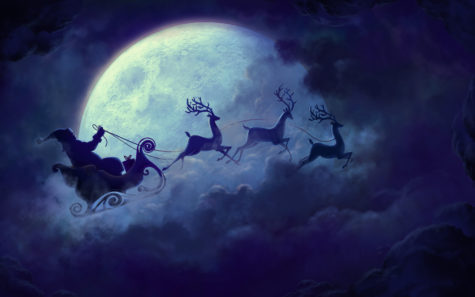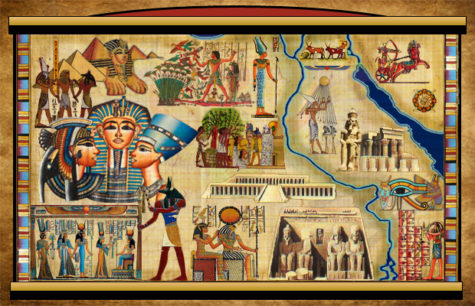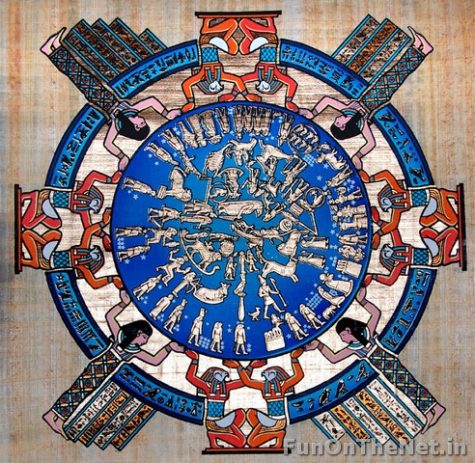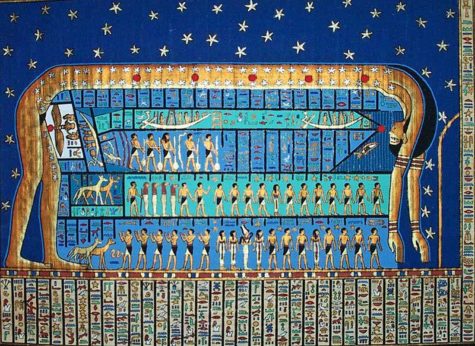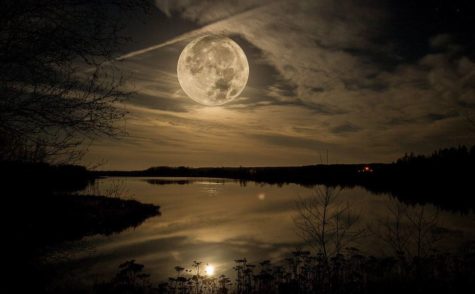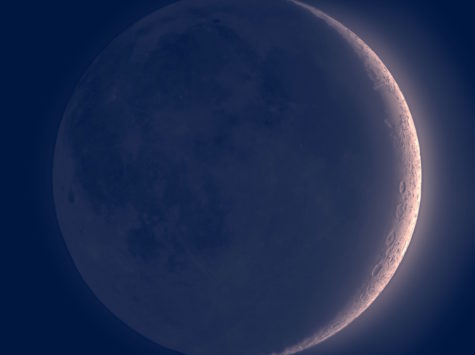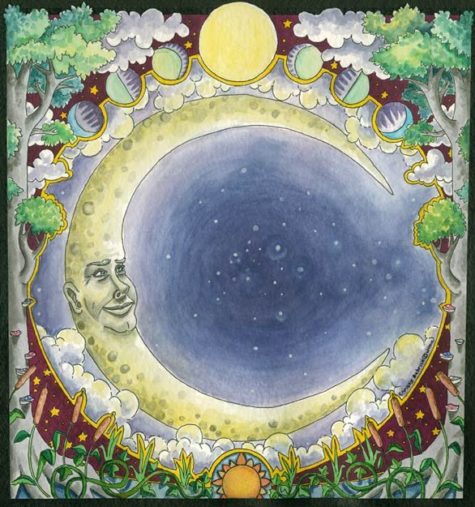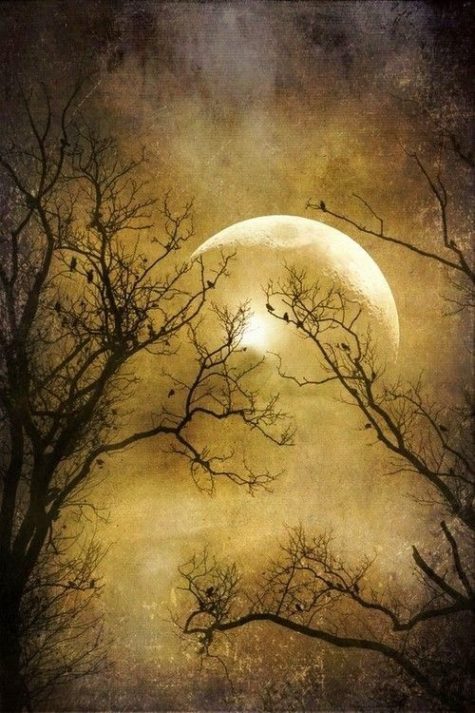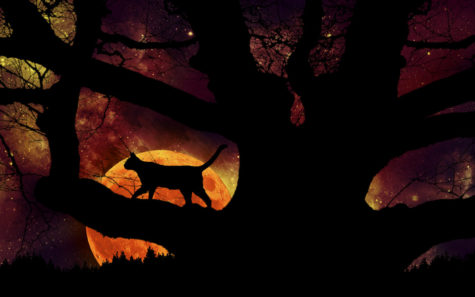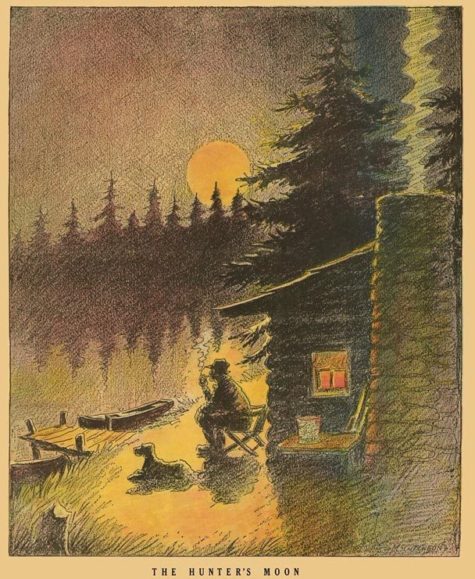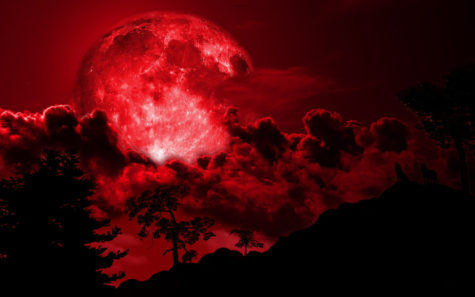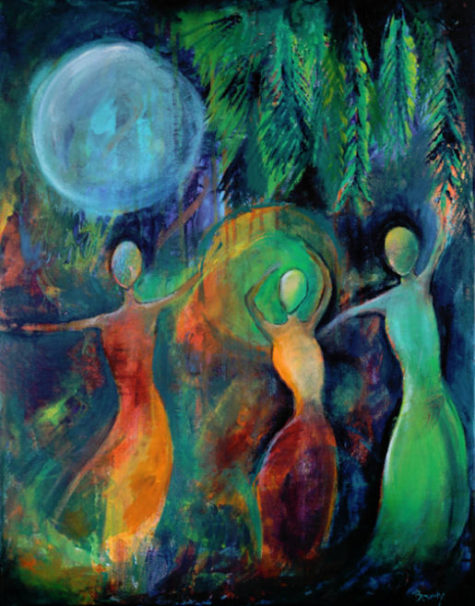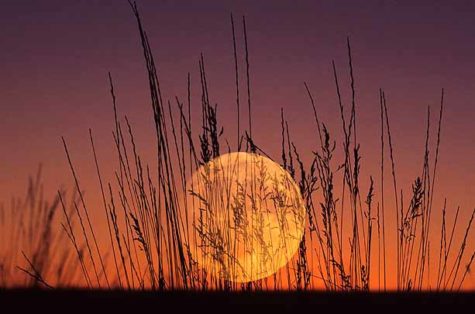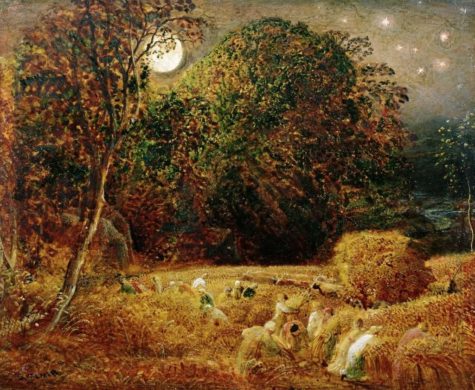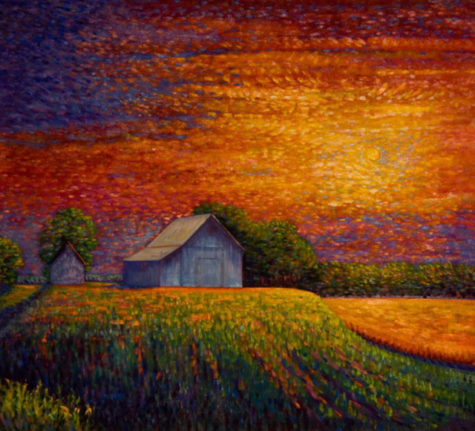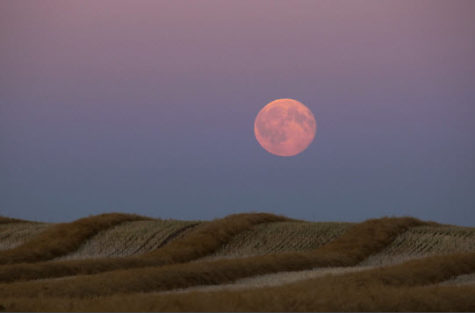Almanac Events
In certain areas of England there was an expression that if a dark moon came on Christmas, a fine harvest year would follow. Other areas declared that a waxing or new moon on Christmas portended a good year, but a waning moon a hard year.
From: Moon Magick
By the time writing first appeared (around 3100 B.C.E.) ancient Egyptian life centered around no less than three calendars. The lunar calendar, the civil calendar, and the Sothic calendar. These calendars were based on the celestial patterns of the moon, the sun, and the star Sirius, respectively.
The Lunar Calendar
The moon with its regular cycle became the oldest time keeper. Coinciding with a woman’s menstrual cycles, it was the perfect instrument to keep track of her and the animal’s fertile times and to record the patterns of life. No wonder the goddesses Isis and Hathor were associated with the moon.
The Solar Calendar
The civil calendars were solar based and used the movement of the sun across the sky to signal the approaching seasons. When roaming the countryside, chasing game, and gathering food gave way to the practice of agriculture, it became more important for our ancestors to master the signs of the growing seasons than to follow animal migration patterns.
Early agriculturists began to look up at the sky in an effort to learn when to prepare the ground, when to plant, and when to reap. Unlike lunar calendars, solar calendars marked the solstices (the longest and shortest days of the year), as well as the equinoxes (when the days and nights were of equal length).
In addition, seasonal changes that affected the growing season were predicted by observing the rise of certain constellations, particularly those constellations that followed the ecliptic (the apparent path of the sun through the heavens). Thus, the appearance of the twelve zodiacal constellations formed an important part of the civil and solar calendar.
Correcting The Inconsistencies
Because the moon cycles didn’t exactly match the sun cycles, five intercalary days, called Epagomenal Days, were eventually added to the calendar year. In Egypt those five days honored the births of the great neters (Supreme Deities) Osiris, Horus, Seth, Isis, and Nephthys. Even after the Epagomenal Days were added to the solar calendar, it was still inexact because the true year is actually a few hours longer than 365 days.
To determine exactly when the seasons would change and when to sow or harvest, the Egyptians began to track and observe all the heavenly bodies, including the moon, the sun, the constellations, and the brightest, most visible stars. By watching the sky over the years, people began to notice that just before dawn near the summer solstice, the rising of the Dog Star Sirius, the brightest star in the heavens.
The rising of this star was a better, more reliable predictor of the coming of the flood season than the solar calendar alone. When the star appeared, the flood waters flowing from the southern mountains and highlands appeared soon after. By observing Sirius, preparations for planting and sowing could be made well in advance. In addition, the regularity of the rise of Sirius most closely resembled the true length of the year.
The Sothic Calendar
The brilliant star Sirius, appearing in the constellation we know as Canis Major, was ancient Egypt’s most important star. The Egyptians called the star Sopdet and equated it with Isis, the powerful goddess of regeneration.
The Greeks called the star Sothis, later developing a so-called Sothic calendar that kept even more regular track of the years and the seasons, being most nearly 365.25 days. Even then the calendar still wasn’t perfect.Incremental changes were occurring due to the rotation of the earth, the tilt of the earth, and the procession of the equinoxes.
The Civil Calendar
By divine decree laid down in the mists of prehistory, the Egyptian priest-king swore never to alter the civil calendar, even though its solar-basted calculations were not keeping up with the changing seasons. The reason for this seemingly irrational adherence lay in the fact that the year had been divinely established by the god of wisdom and time, Thoth.
Thoth’s laws were the laws of the gods, and divine laws were considered unalterable. The real reason may have been that astrologer priests were tracking an even larger arc of time – a procession not of the sun and moon, but of the equinoxes – that resulted in a kind of calendar of the ages.
When the Greeks arrived in Egypt, however, they saw little value in maintaining such a cosmic calendar when the civil calendar was so woefully out of alignment. Once they established themselves as kings, the Ptolemaic Greeks believed that the time had come to alter Thoth’s divine law. They coerced the priests into adding an extra day every four years to even out the true calendar. The result created the leap year, which we use even to this day.
How The Egyptian Calendar Works
At first Egypt’s calendar seems hard to understand because we are conditioned to our own notions of month and season derived from the Romans. Really, the ancient Egyptian calendar is fairly simple. The year has twelve months, the months have three weeks, and each week has ten days. This represented the basic system of the lunar year.
Tacked on to the end of these 360 days were the five Epagomenal Days, added to create the 365 days of the solar year. The Epagomenal Days signaled the end of the year and were followed by the new year’s celebration, just as New Year’s Day follows New Year’s Eve in our calendar. But, whereas we begin counting in the winter month of January, the ancient Egyptians began counting at the rise of the Dog Star Sirius, which occurs in the middle of our summer.
This system makes perfect sense because the new year signaled the beginning of a new agricultural cycle. When the Dog Star rose, the Nile flooded, and the parched earth was refertilized The sacred actions of the Nile River – its flooding, its retreat into its banks leaving fertile soil, and its eventual low flow creating drought conditions – determined not only the major festivals of the pharaoh and his people,but the three seasons of the year.
The Three Seasons
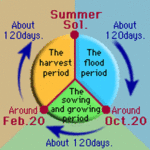 The ancient Egyptians did not celebrate four seasons of spring, summer, fall, and winter as we do. Rather, their three seasons were uniquely timed to the particular agricultural requirements in their geographic region. The three seasons were:
The ancient Egyptians did not celebrate four seasons of spring, summer, fall, and winter as we do. Rather, their three seasons were uniquely timed to the particular agricultural requirements in their geographic region. The three seasons were:
- Ahket – Innundation
Also called the Red Season, it extended from mid July to mid November, when most of the river valley and Delta were underwater.
- Pert – Sowing
Also called the Black Season, it extended from mid November to mid March, the equivalent to our spring, which the Egyptians called the Coming Forth.
- Shemu – Harvest
Also called the White Season, it extended from mid March to mid July when crops were harvested. By season’s end, everything was dry and the fields were scorched.
From: Feasts of Light
The Mourning Moon is upon us. As the days grow shorter and the sun’s life-giving fires are banked, sometimes it seems so dark we feel the light will never return. This moon, however, is a reminder that death is just a part of the endless cycle of life, death, and rebirth.
It’s also known as the Fog Moon or Snow Moon, depending on where you live. Some Native American tribes referred to it simply as The Moon When Deer Shed Antlers (although in most regions it’s more accurate to say they’re shedding their velvet – a buck doesn’t usually lose antlers until later in the winter, unless you’re very far north).
Correspondences:
- Colors: Gray, blues
- Gemstones: Lapis lazuli, turquoise, topaz
- Trees: Cypress, alder, hazel
- Gods: Bastet, Isis, Kali, Hecate, Astarte
- Herbs: Thistle, betony, verbena, fennel
- Element: Water
In the early Celtic society, November was the beginning of the new year, and so it makes sense to use the magic of this moon phase to celebrate new beginnings.
This is a time of washing away the baggage of the past and letting it go. Once you’ve done that, you’ll be able to focus on the joys of the future. During the Mourning Moon phase, say goodbye to bad habits and toxic relationships, and get a fresh start for the new year. Work on developing and strengthening your connection with Spirit.
The Dark of the Moon, those few days where the moon is not visible, just prior to the rebirth of the New Moon, are controversial. Some traditions will not cast spells during this period. Others. particularly those devoted to Dark Moon spirits like Hekate or Lilith, consider this a period of profound magickal power which may be exploited as needed.
In Arabic folk custom, it’s recommended that you keep an eye on moon phases. Whatever you find yourself doing at the moment when you first catch a glimpse of the brand new moon is the right thing for you to do.
More New Moon Lore:
- Almost every culture believed that if the New Moon came on Monday (Moon-day) it was a sign of good weather and good luck.
- Two new moons in one month were said to predict a month’s bad weather.
- Any new moon on a Saturday or Sunday was said to predict rain and general bad luck.
- Good luck will come your way if you first see the New Moon outside and over your right shoulder. You can also make a wish that will be granted. The best luck came from looking at the Moon straight on.
- In some parts of Ireland, upon seeing the New Moon, people bowed or knelt, saying: O Moon, leave us as well as you found us.
- Upon seeing the New Moon, bow to her and turn over the silver or coins in your pocket. This will bring you luck in all your affairs.
- If the New Moon is seen for the first time straight ahead, it predicts good fortune until the next New Moon.
- To encourage luxuriant growth, cut your hair on the New Moon.
- Wood cut at the New Moon is hard to split.
- The English had a saying that if a member of the family died at the time of the New Moon, three deaths would follow.
- Although the Koran expressly forbids worshiping the Sun or Moon, many Muslims still clasp their hands at the sight of a New Moon and offer a prayer.
From: Moon Magick and other sources
Traditionally, the each of the first ten days after the New Moon has it’s own attributes and qualities. Here’s the folklore on each of those days:
First Day: A good day for new beginnings. To fall ill on this day means the illness might last a long while. A child born at this time will be happy, prosperous, and live long.
Second Day: A good day for buying and selling and for starting a sea voyage. Also a good time for hoeing and sowing.
Third Day: Crimes committed on this day are certain to be found out.
Fourth Day: A good day for building, construction, and home renovations. Also a good day to be born on if you want to enter politics.
Fifth Day: The weather on this day gives an indication of what to expect for the rest of the month. It’s a good day for a woman to conceive.
Sixth Day: The best day for hunting and/or fishing.
Seventh Day: A good day for meeting and falling in love.
Eighth Day: A sickness begun on this day was thought to be likely to cause death.
Ninth Day: If the Moon shines in your face on this day, you may have twisted features or go mad.
Tenth: People born on this day are likely to be travelers or have a restless spirit.
Other Days: A New Moon on a Saturday or Sunday indicates rain, as does seeing the outline of the whole Moon at the same time as a New Moon. Furthermore, should the horns of a New Moon point upwards then the weather will be fair for the next lunar cycle, but if they point down, you can expect rain.
What follows is a list (in alphabetical order) of the names given to the October moon. Also listed is the tradition and/or origin of that moon name:
- Blood Moon ~Mediaeval English, Neo-Pagan
- Blood Moon Falling ~Janic (full)
- Corn Ripe Moon ~Taos
- Falling Leaves Moon ~Arapaho
- Full Dying Grass Moon ~Algonquin Native American, Colonial
- Harvest Moon ~When closest to the Autumnal Equinox
- Hunter’s Moon ~Neo-Pagan, Algonquin, Native American, Colonial
- Kentenha ~Mohawk
- Leaf Moon ~Janic (dark)
- Leaf Fall Moon ~San Juan, Native American
- Long Hair Moon ~Hopi
- Moon of the Changing Season ~other
- Shedding Moon ~other
- Snow Moon ~other
- Spirit Moon ~other
- Ten Colds Moon ~Kiowa
- Travel Moon ~Algonquin, Native American, Colonial
- Tugluvik ~Inuit
- Vintage Moon ~other
- White Frost Moon ~other
- Windermanoth ~other
- Wine Moon ~Mediaeval English
- Winterfelleth Moon ~other
- Winter’s Coming Moon ~other
The Hunter’s Moon is so named because plenty of moonlight is ideal for hunters shooting migrating birds in Northern Europe. The name is also said to have been used by Native Americans as they tracked and killed their prey by autumn moonlight, stockpiling food for the winter ahead.
Traditional association with feasting:
In the northern hemisphere, the Hunter’s Moon appears in October or November, usually in October. Traditionally, it was a feast day in parts of western Europe and among some Native American tribes, called simply the Feast of the Hunter’s Moon, though the celebration had largely died out by the 18th century. There is a large historical reenactment by that name in Lafayette, Indiana during the early part of October 2010
Variation in time of moonrise:
In general, the moon rises about 50 minutes later each day, as it moves in orbit around Earth. All full moons rise around the time of sunset. The Harvest Moon (full moon closest to the Autumnal Equinox) and Hunter’s Moon are special because — as seen from the northern hemisphere — the time of moonrise on successive evenings is shorter than usual. The moon rises approximately 30 minutes later, from one night to the next, as seen from about 40 degrees N. latitude, for several evenings around the full Hunter’s or Harvest Moons.
Thus there is no long period of darkness between sunset and moonrise, around the time of these full moons. In times past, this feature of these autumn moons was said to help hunters tracking their prey (or, in the case of the Harvest Moon, farmers working in the fields). They could continue tracking their prey (or bringing in their crops) by moonlight even when the sun had gone down. Hence the name Hunter’s Moon.
The reason for the shorter-than-usual rising time between successive moon rises around the time of the Harvest and Hunter’s Moon is that the orbit of the Moon makes a narrow angle with respect to the horizon in the evening in autumn, leading the Moon to higher positions in the sky each successive day.
Brightness and distance:
The Hunter’s Moon is not brighter, smaller or yellower than during other times of the year, but all full moons have their own special characteristics, based primarily on the whereabouts of the ecliptic in the sky at the time of year that they are visible.
The full moons of September, October and November, as seen from the northern hemisphere — which correspond to the full moons of March, April and May as seen from the southern hemisphere — are well known in the folklore of the sky.
Since the Moon’s sidereal period differs from its synodic period, the perigee of the Moon (the point where it is closest to the Earth) does not stay in sync with the phases of the Moon. Thus the Hunter’s Moon does not correspond to any special timing of the Moon’s distance from the Earth. This is why the Hunter’s Moon is not, in general, brighter than any other regular full moon.
Source: Wikipedia
October’s full moon is often referred to as the Blood Moon, or Sanguine Moon. The Blood Moon takes its name not from blood sacrifices, but from the old custom of killing and salting down livestock before the Winter months made it impossible to feed them. Only the choicest stock was kept through the cold season.
The leaves are falling from trees, the deer are fattened, and it’s time to begin storing up meat for the long winter ahead. Because the fields were traditionally reaped in late September or early October, hunters could easily see fox and other animals that come out to glean from the fallen grains.
Coming right before Samhain, it’s a time when the nights are crisp and clear, and you can sense a change in the energy around you.
Correspondences:
- Colors: Dark blue, black, purples, Deep Blue Green
- Element: Air
- Scents: strawberry, apple blossom, and cherry
- Gemstones: Obsidian, amethyst, tourmaline, opal, beryl, turquoise
- Herbs: Apple blossom, pennyroyal, mint family, catnip, Sweet Annie, thyme, catnip, uva ursi, angelica, burdock
- Flowers: Calendula, marigold, cosmos
- Trees: Apples, yew, cypress, acacia
- Birds: Heron, crow, and robin
- Animals: Stag, jackal, elephant, ram, scorpion
- Nature Spirits: Frost and plant faeries
- Gods: Herne, Apollo, Cernunnos, Mercury, Ishtar, Astarte, Demeter, Kore, Lakshmi, The Horned God, Belili, Hathor
- Powers/Advice: A time to work on inner cleansing, letting go karma, reincarnation, justice and balance.
This is the time when the veil between our world and the spirit world are at its thinnest. Use this time for spiritual growth — if there’s a deceased ancestor you wish to contact, this is a great month to do it. Hold a séance, work on your divination, and pay attention to messages you get in your dreams.
Probably because of the threat of winter looming close, the Blood Moon is generally accorded with special honor, historically serving as an important feast day in both Western Europe and among many Native American tribes.
The Blood moon focuses around connecting with animals, and our animal totems and guides. Those who practice looking at the degrees of the lunar cycle may realize that this is the last time the moon will be at a later degree. This conjunction will allow many to look at life differently every time the new moon approaches and allowing us to look at past and the future at the same time.
This moon also forces us to look at love completely differently and ask the questions:
- What is love?
- Is the love you have unconditional?
That love does not have to be just in the areas of relationship but also our interaction with people, it can even be love of work and things you have acquired.
Additionally it means to be able to let it go of someone or something no matter how much you love it because it needs to be set free. The past years have reminded us that changes need to happen that this kind of life is no longer tolerant and peaceful. We will be reminded once again we can no longer walk in other people’s shadows.
Because this moon focuses around our animal nature, some of us may become very aggressive in what we say or do. It may cause many people to act out. This type of moon has been known for violence, suicides and domestic disputes over things that may or not exist – another reason it is known as the blood moon.
A Ritual For The Blood Moon
Here’s a nice little ritual to do for the Blood Moon.
You will need:
- A special glass or chalice – something pretty
- Rose water – or spring water
- White cotton cloth
- Red wine
- Ripe pomegranate
- Honey
- Silver spoon
For this ritual it will be nice to dress up a little. Wear white or silver, and if you have it, silver jewelry with carnelian, or moonstone. Use a special glass or chalice.
Rinse the chalice with rose water and dry it with a clean white cotton cloth. Pour the cup of red wine into the chalice, slice the pomegranate in half and squeeze the juice into the wine. Add a teaspoon of honey, and stir with the silver spoon.
Go outside. If you are doing this with friends, form a circle. Lift the chalice in the direction of the moon and say a few words of praise, thanks, appreciation, whatever feels appropriate and right. Then take a sip of the wine and pass the chalice clockwise around the circle (if there is one). Each person “toasts” the Blood Moon and drinks.
When the circle is complete, pour the rest of the wine on the ground as a “libation” or offering to the earth.
Collected from various sources including: PaganWiccan.About.Com, Art by Beverly Ash Gilbert.
The Full Moon in September is all about emotions, healing, and balancing. This is a time of organizing and preparing for the coming months.
“This powerful Gateway is an opportunity to greatly accelerate your spiritual growth and to promote Balance in your life. Divine Masculine supports the Divine Feminine. As they come together in Sacred Marriage, you realize that one without the other is not balanced. So, do not act unless it is aligned with your Integrity; your Heart. Be inspired and then take a step toward your dream.”
– Ascension: Soulstice Rising
The Farmer’s Almanac tells us that this full moon’s name is the Full Corn Moon, attributed to Native Americans because it marked when corn was supposed to be harvested, however some calendars attribute the Corn Moon to the month of August. Most often, the September full moon is actually the Harvest Moon, which is the full Moon that occurs closest to the autumn equinox.
In two years out of three, the Harvest Moon comes in September, but in some years it occurs in October. At the peak of harvest, farmers can work late into the night by the light of this Moon. Usually the full moon rises an average of 50 minutes later each night, but for the few nights around the Harvest Moon, the Moon seems to rise at nearly the same time each night: just 25 to 30 minutes later across the U.S., and only 10 to 20 minutes later for much of Canada and Europe.
Corn, pumpkins, squash, beans, and wild rice, the chief garden and native staples, are now ready for gathering.
The September Moon is also known as Harvest Moon, Barley Moon. The harvesters would gain extra time in the fields by the light of the harvest moon.
Please take a seat and clear your mind of what fills it now and hear my words:
As you are sitting, close your eyes and feel the yellow of the sun..Reach up with your arms and let your fingertips touch that yellow..Now, lay back, with your arms extended and become a ray of the sun..As we all lay in a circle, we form the sun – we are all rays of this vivid starburst.
Look down to the Earth and see the fields ripe with the summer’s abundance..Find your self in the center of this abundance holding a large willow basket, eager to begin your autumn harvest.
Step first into an expanse of sweet corn..See the erect, regal, green stalks of corn..Observe a ripe ear on a particular stalk which extends to you..Under its scruffy whiskers kernels that sparkle like gold shine through. You are reminded of your own riches – both tangible and intangible..Reach out and pick this ear and put it into your basket.
Leave the corn field and enter an orchard; an apple orchard..See the beauty of these trees, these majestic symbols of the Goddess..Feel the fullness of her boughs – full of ruby red apples of knowledge..Reach up, way up, and pick two. Put one in your basket and eat the other. Taste and enjoy this fruit – for in this garden tasting an apple is not forbidden.
Now move toward an onion field which beckons you..Once green, now browning spikes point up to you, tempting you to dig below…Pull gently and the ground gives birth to aniridescent, opal bulb, full of body and character and strength..A vegetable with the power to make you feel the power of tears..Add this to your growing harvest.
Notice ahead thick bushes of ripened raspberries..Sharp brambles protecting their precious, succulent garnets..The sweet nectar of these berries remind you of your own sensuality – your own ability to feel, express, extend all that is soft and loving and warm to others..Take your time here and pick plenty of these supple jewels for your basket.
Step away now and look around you..Find a patch of fruit or vegetables that appeals to you..Enter it, admire its offerings, select a precious gem of your own to harvest..Choose a resource to sustain you in the rapidly upcoming time of cold and darkness…Capture some warmth and light and savor its presence.
With your arms now laden with this basket of bountiful treasures, it is time now to rest..Take your harvest to the grassy knoll in the sun just beyond and sit and bask in the glory of its healing heat..Rest in contentment knowing you have collected that which you need to give you strength and nourishment in the winter days to come.
Put yourself back in the sky now..Become the sun once again..Shine down upon yourself and your gatherings..Absorb the energy of the fruits of your labors, bless these seeds you planted in the Spring and nurtured to fruition through the summer..Be the sun..Shine down upon all that is good and good-giving..Give the light of hope to all you shine upon.
When everything you have touched with your rays is full of your brightness, open your eyes and rejoin our circle.
Sources:
- Journeying To The Goddess
- Magickal Winds
- Meditation by ~Angelica
The September full Moon is usually known as the Full Corn Moon because it traditionally corresponds with the time of harvesting corn. It is also called the Barley Moon because this is the time to harvest and thresh ripened barley.
Often, the September Moon is also called the Harvest Moon, but this year the Harvest Moon occurs in October. The Harvest Moon is the Moon that falls nearest the autumnal equinox; this full Moon provides the most light at the time when it’s needed most—to complete the harvest!
Source: Almanac.com
